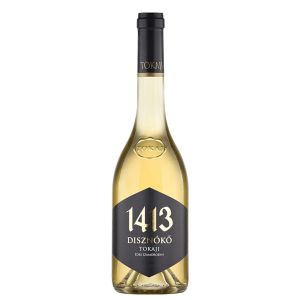Disznokö - Tokaji

The Disznókö winery in Tokaji, Hungary, is one of the driving forces behind quality viticulture in this historic wine region. The goal has been set to tie in with the glory days of Tokay in the 18th century, when these wines were among the most famous in the world.
In 1992, AXA Millésimes bought the neglected Disznókö vineyard, which was already mentioned in 1413. Many vines had to be replanted and much closer together, since in the era of socialism only high yield was valued, not quality. In addition, there were new winery buildings and the most modern technology, so that today Disznókö is one of the best wineries in all of Hungary. In 2005, these efforts were officially recognized with the title "Winery of the Year in Hungary".
The main focus here is on the traditional grape variety Furmint, which is ideal for the production of noble sweet wines due to its susceptibility to the botrytis fungus. However, it can also be used to produce excellent dry white wines that represent the terroir very well. There are also Zéta, a cross between Furmint and Bouvier, as well as Hárslevelű and small amounts of other local varieties.
The Disznokö range is roughly divided into three categories, the dry white wines, the late harvest and the sweet Aszu wines. The winery is outstanding in each of these categories.
- Sensational value!0,5L 2019 1413 Tokaji Edes Szamorodni, Disznokö€19.9539.9 € / L Incl. VAT, Excl. Shipping
- brilliantly sweet & sour0,5L 2002 Tokaji Aszu 6 Puttonyos, Disznokö€63.90127.8 € / L Incl. VAT, Excl. Shipping
- 96/100 Wine Enthusiast0,5L 2013 Tokaji Aszu 5 Puttonyos, Disznokö€49.5099 € / L Incl. VAT, Excl. Shipping
- 97/100 Wine Enthusiast0,5L 2016 Tokaji Aszu 6 Puttonyos, Disznokö€79.00158 € / L Incl. VAT, Excl. Shipping
Since many of our customers probably do not speak Hungarian, we will briefly explain the most important wine terms here:
Eszencia – the nectar. Tokaij, which is only produced from the free run must, i.e. only the juice that escapes from the noble rotten grapes without being pressed.
Aszú – Trockenbeerenauslese
Szamorodni - means: "as grown", i.e. wines made from whole grapes without first picking out the noble rotten berries.
Puttonyos – wooden buttes with about 25kg of noble rotten grapes. Between three and six puttonyos of noble rotten must are added to a Tokaij cask, which defines the sweetness of the wine. Roughly speaking, 3 puttonyos have about 60 grams of residual sugar, 4 = 90, 5= 120 and 6 puttonyos about 150g. Since 2013 only 5 and 6 puttonyos are allowed to carry the addition Tokaji Aszú.
Bor or FN are wines without designation of origin
OEM denotes a quality wine
OEM DHC (Districtus Hungaricus Controllatus) is the higher level for regional wines, similar to the DAC system in Austria.
Fehérbor = white wine
Vörösbor = red wine






